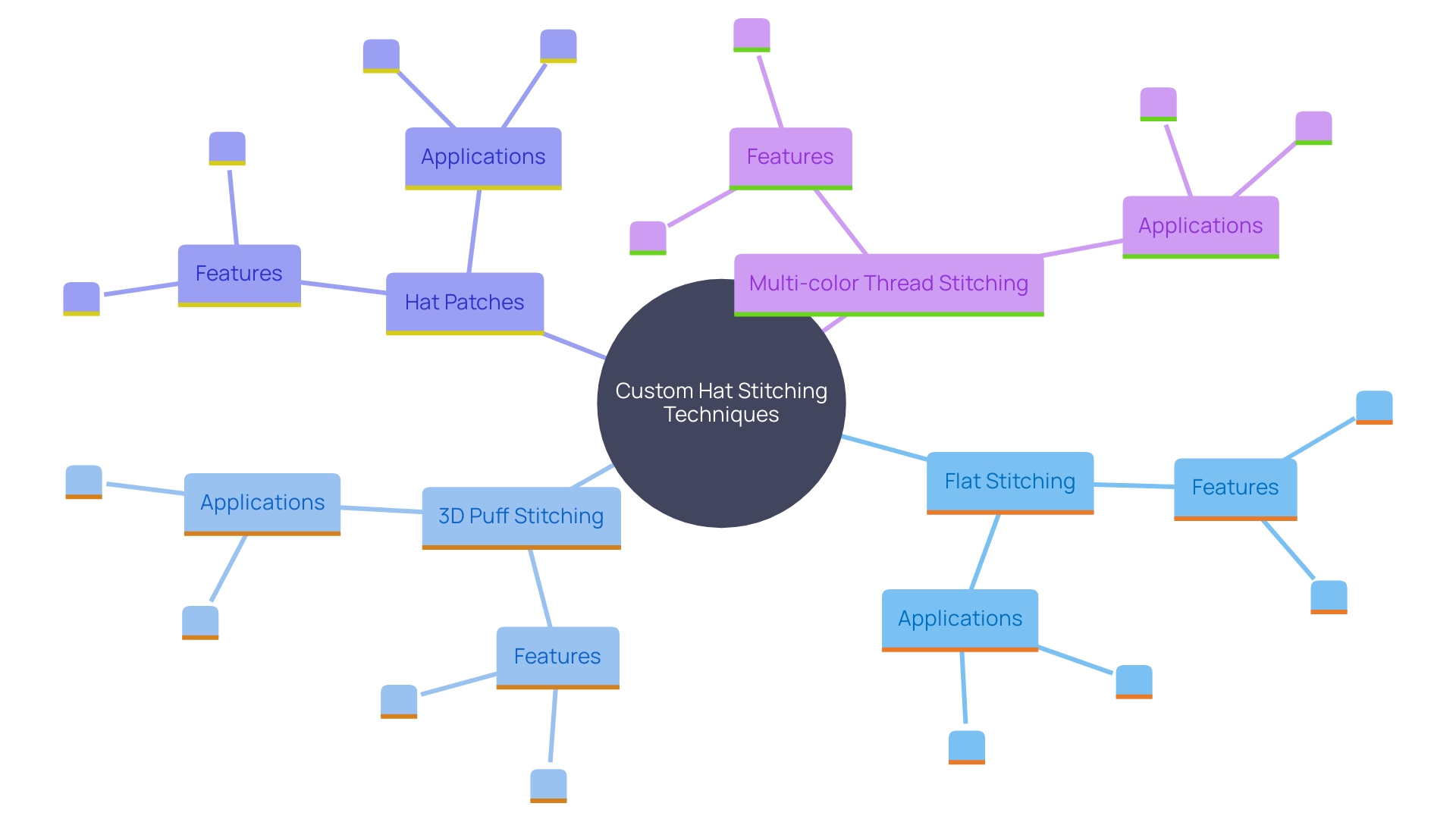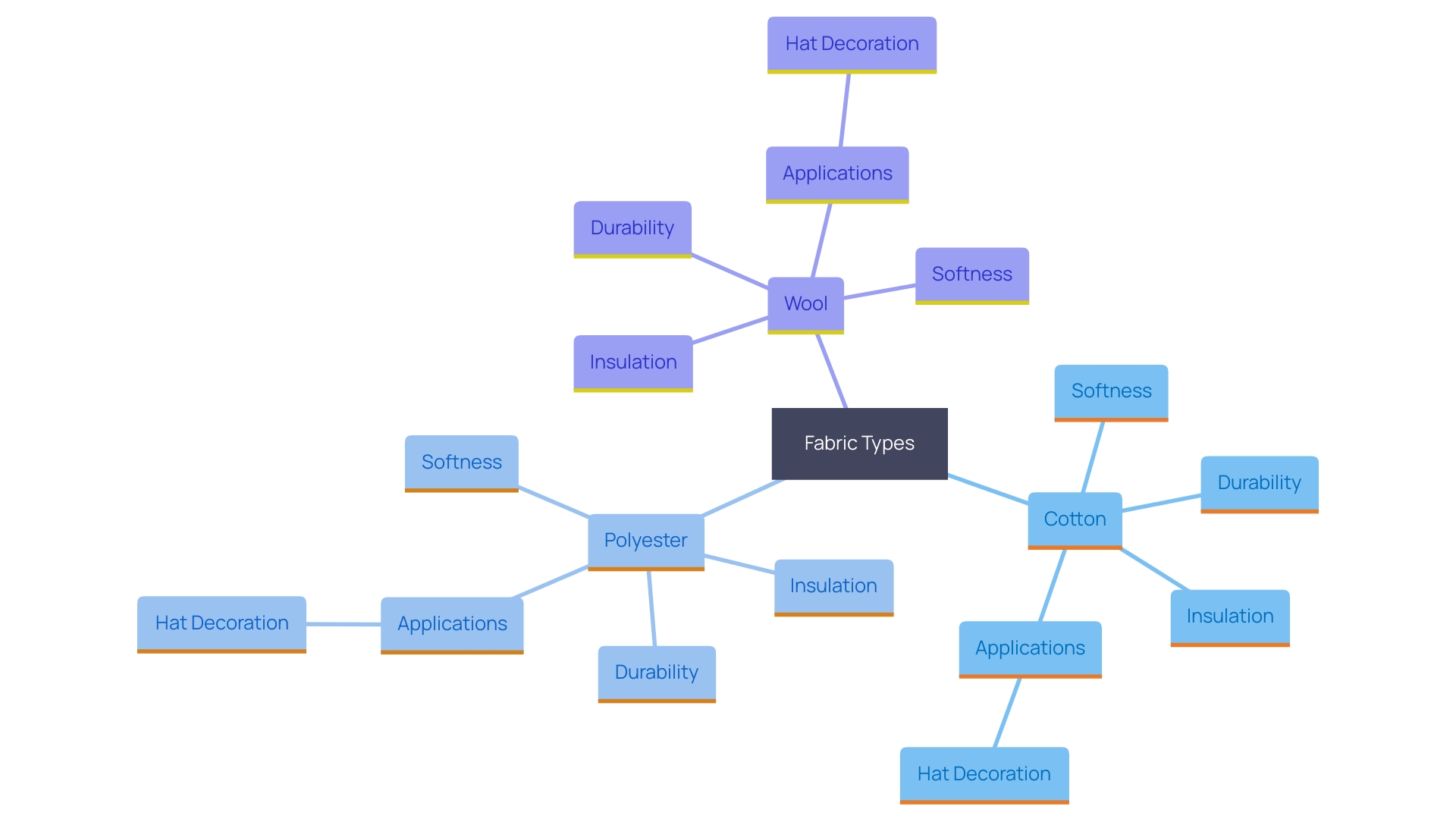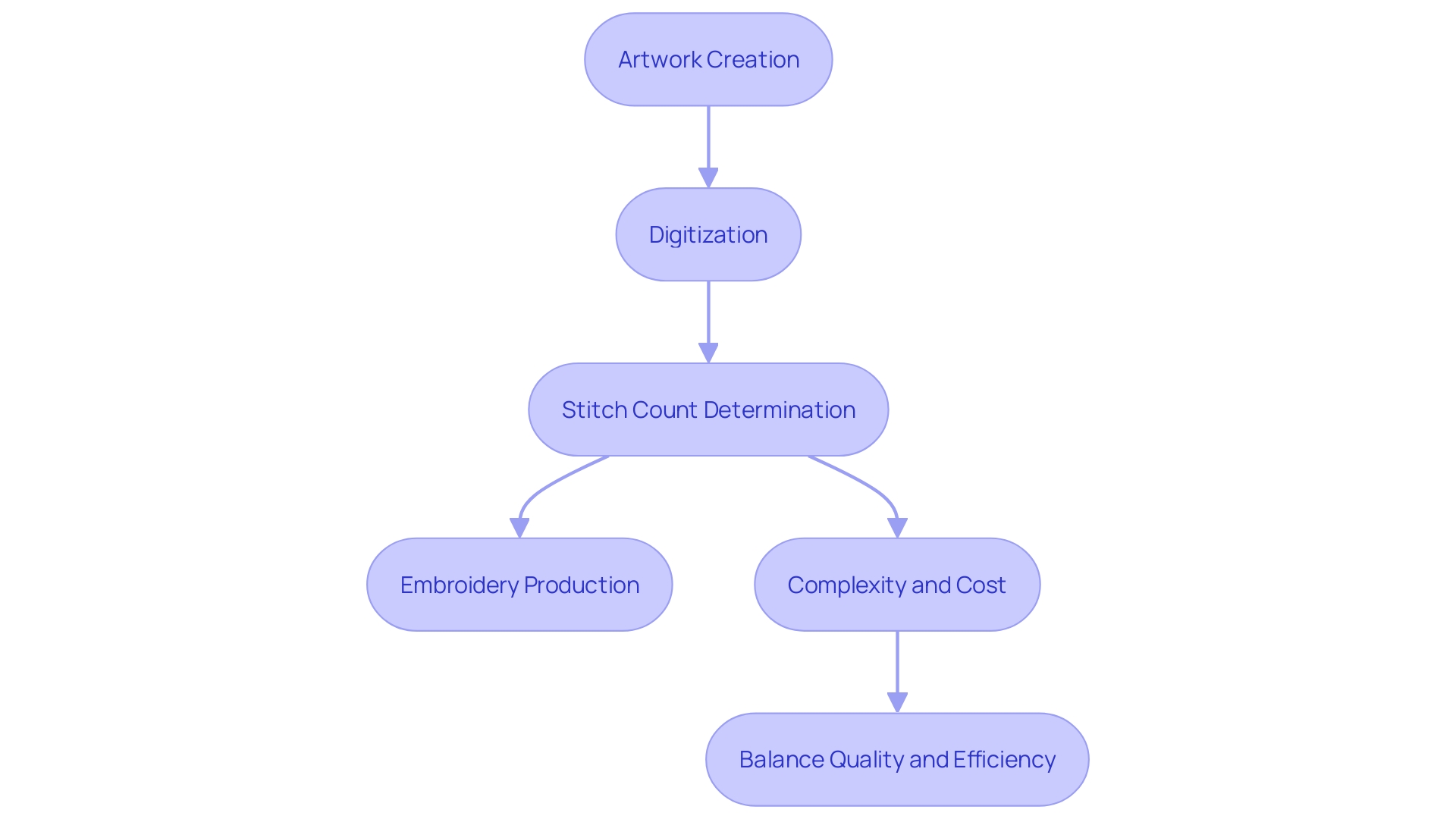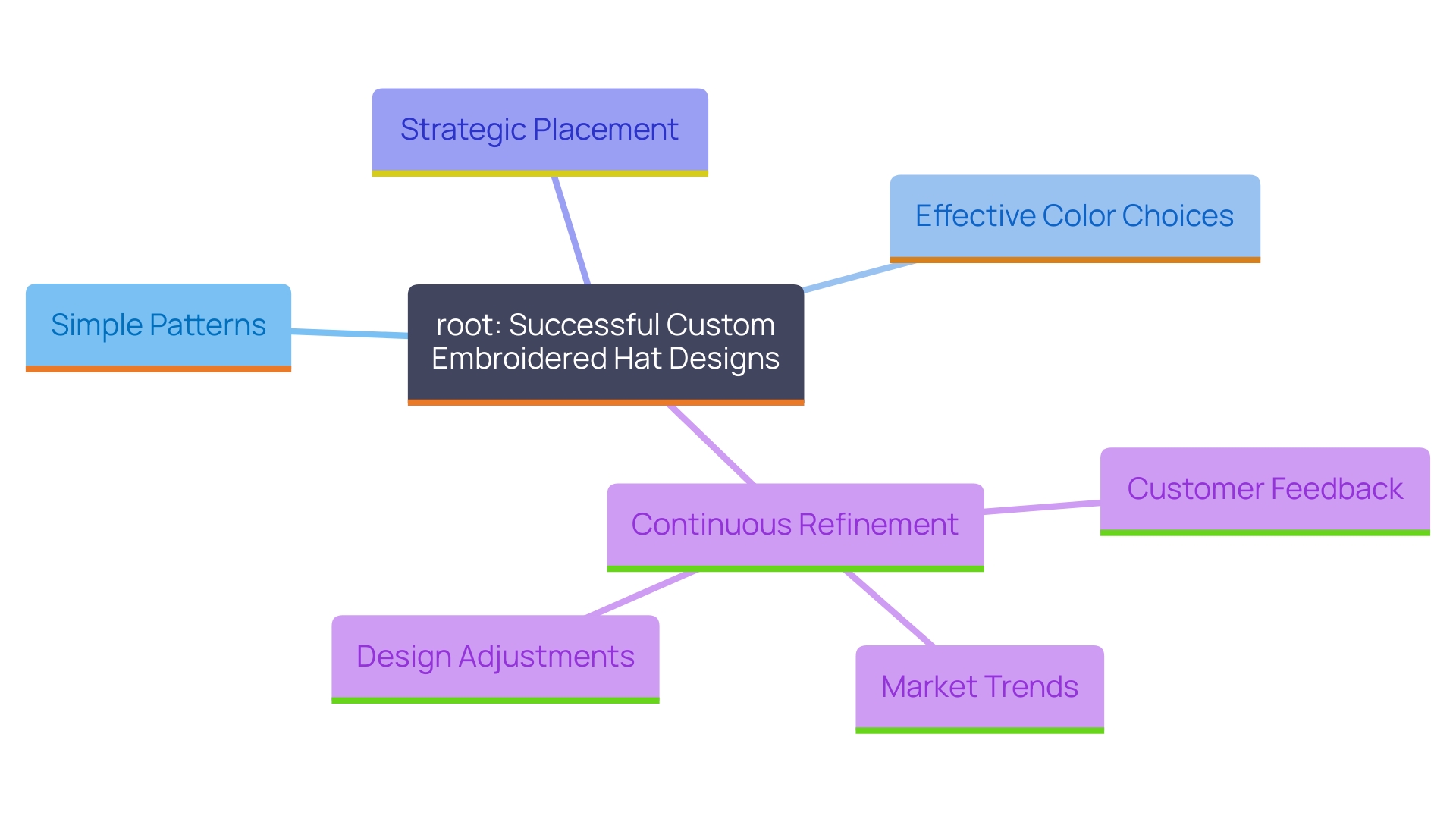Introduction
Custom hat embroidery is more than just a way to decorate headwear; it’s an art form that blends creativity with craftsmanship. From flat embroidery’s sleek elegance to the bold, tactile effect of 3D puff embroidery, the techniques available cater to a wide range of aesthetic preferences. The choice of materials, such as cotton, polyester, or wool, further influences the final product’s comfort and durability.
Understanding the nuances of digitizing and stitch count is crucial for achieving detailed and cost-effective designs. Additionally, the role of professional equipment and skilled operators cannot be understated in producing high-quality embroidered hats. This article delves into the various aspects of custom hat embroidery, offering insights into design considerations, the importance of the right tools, and the benefits of this versatile medium.
Whether for branding or personal expression, the right techniques and materials can turn a simple hat into a standout piece.
Types of Hat Embroidery Techniques
Custom hat stitching offers a spectrum of techniques to bring designs to life, each catering to different styles and preferences. Flat stitching, for instance, provides a clean and smooth finish, ideal for sleek and professional looks. On the other hand, 3D puff stitching adds dimension and texture, making logos literally stand out. Hat patches enable complex patterns to be stitched directly onto the hat, providing versatility and durability. Multi-color thread stitching can further enhance visual impact, making logos and patterns stand out with vibrant detail. As some of the most successful hat shop owners know, continuously gathering customer feedback and refining strategies is key to thriving in this stable and diverse market. 'Embracing these varied stitching techniques not only meets current demands but also sets the stage for future trends and customer preferences.'.

Choosing the Right Material for Hat Embroidery
Choosing the appropriate fabric is essential in custom hat decoration, as it directly affects the final look and durability of the design. Cotton, recognized for its softness and breathability, is a favored option for casual headwear, making them comfortable for daily use. Polyester, conversely, is valued for its durability and resistance to fading, ensuring the stitching retains its vibrant appearance even after extensive use. Wool provides outstanding insulation, making it perfect for winter headwear. By understanding these fabric characteristics, businesses can tailor their hat offerings to meet diverse customer needs and preferences, ensuring both satisfaction and style.

Understanding Digitizing and Stitch Count
Digitizing converts artwork into a digital format that stitching machines can interpret, ensuring accurate reproduction on hats. This process is crucial for maintaining the integrity of the original artwork, as it transforms the pattern into a series of commands that the machine follows to stitch the layout onto the fabric. This relationship between the digital version and the final embroidered product is akin to the connection between a manuscript and its digital image, where the digital version serves as a distinct artifact offering a range of possibilities.
Stitch count, which indicates the number of stitches in a pattern, significantly influences both the complexity and cost of the embroidery. A greater stitch count permits more complex and detailed patterns, but it also requires extra time and resources. This complexity reflects the historical development of textile manufacturing, where advancements in technology resulted in more intricate and diverse patterns. Therefore, comprehending the stitch count is crucial for balancing quality of the work with production efficiency.
The meticulous process of digitizing and managing stitch counts is akin to the precise art of weaving, where each thread contributes to the overall fabric, much like words woven into a coherent narrative. This intricate craft has deep cultural roots and continues to evolve with technological advancements, much like the digitization processes that now play a pivotal role in modern embroidery.

Design Considerations for Custom Hat Embroidery
Generating patterns for custom embroidered hats involves balancing several key factors to achieve the best results. Simple patterns often translate better, as intricate details can become blurred when reduced in size. Choosing the right colors is vital; colors that contrast well with the hat material enhance visibility and appeal. Additionally, strategic placement of the arrangement can maximize its impact and aesthetic value. Successful hat shop owners continuously refine their strategies based on customer feedback, ensuring their creations remain relevant and appealing in the diverse hat market.

The Role of Professional Equipment and Expertise
In the competitive world of custom embroidered hats, the right equipment is non-negotiable for achieving top-tier results. Contemporary stitching machines stand out by managing intricate designs and a spectrum of colors with impressive precision and reliability. For instance, the Advanced Textiles Expo 2023 showcased the latest in embroidery technology, emphasizing the need for high-performing fabrics that endure harsh conditions while remaining visually appealing.
However, the machinery alone isn't enough. Skilled operators who can navigate and troubleshoot these advanced systems are crucial. As highlighted by industry experts, human capital remains a cornerstone of quality and productivity. This combination of advanced technology and adept personnel ensures that the final product not only meets but exceeds quality expectations.
Moreover, the hat industry itself is diverse and stable, encompassing a variety of styles from baseball caps to sun hats. Successful businesses in this sector continuously refine their strategies based on customer feedback, adapting to market demands and trends. 'Investing in both cutting-edge tools and knowledgeable staff is essential for staying ahead in this dynamic market, ensuring that every personalized hat not only stands out but also upholds the highest standards of craftsmanship.'.
Benefits of Custom Hat Embroidery
Custom hat embroidery offers far more than just a stylish appearance. It provides a platform for businesses and individuals to showcase their unique identity and brand. These personalized caps act as effective marketing instruments, greatly enhancing brand visibility. Additionally, embroidered headwear is recognized for its durability, enduring frequent use and damage, making it a wise investment. The hat market in the US is both stable and diverse, encompassing various types such as baseball caps, sun hats, winter hats, fashion hats, and custom-made options. This diversity signifies there's a personalized hat for every taste and occasion. Successful hat shop owners continuously gather customer feedback and refine their strategies to thrive in this competitive market. Whether for promotional purposes or personal flair, custom hat embroidery offers lasting value and a touch of personalization that stands out. As one expert notes, 'We take design seriously. Like, really seriously.' This dedication to quality ensures that every embroidered hat is not just an accessory but a statement.
Conclusion
Custom hat embroidery represents a fusion of creativity and craftsmanship, offering a plethora of techniques that cater to diverse styles and preferences. From the sleek elegance of flat embroidery to the eye-catching dimension of 3D puff embroidery, each method enhances the aesthetic appeal of hats. The choice of materials, whether cotton, polyester, or wool, also plays a crucial role in determining comfort and durability, ensuring that the final product resonates with customer needs.
Understanding the intricacies of digitizing and stitch count is essential for achieving high-quality designs. Digitizing transforms artwork into a format suitable for embroidery machines, while stitch count influences both design complexity and production costs. Balancing these elements allows for intricate designs that are both appealing and efficient to produce.
Design considerations are equally important, as simple, well-contrasted designs tend to translate better onto fabric. Strategic placement can further elevate the visual impact of the embroidery. Achieving these results requires not only advanced equipment but also skilled operators who can navigate the complexities of modern embroidery technology.
This combination of innovation and expertise is vital for creating hats that exceed quality expectations.
Ultimately, custom hat embroidery serves as a powerful means of personal expression and branding. It enhances visibility for businesses while offering individuals a unique way to showcase their style. With a stable and diverse market, there is a custom hat for every occasion, making this medium not just a fashion statement but a lasting investment.
Embracing these elements ensures that every embroidered hat is a standout piece, reflecting a commitment to quality and creativity.




